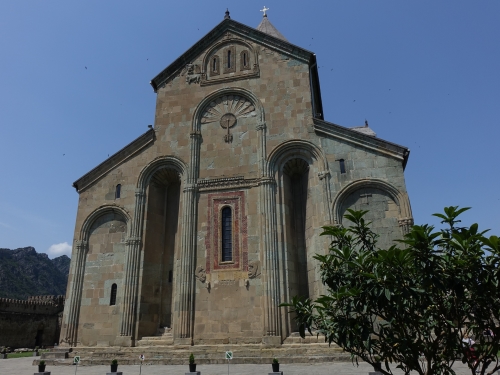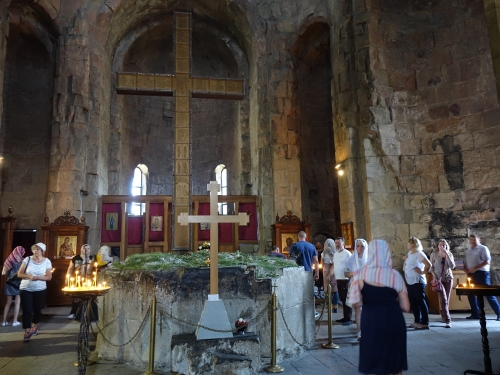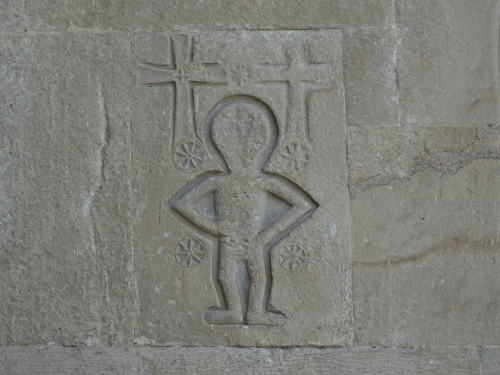Blog WHS Visits
WHS #662: Mtskheta
The Historical Monuments of Mtskheta are all about the Georgian Orthodox Church, celebrating the introduction of Christianity in Georgia in the year 317. Three medieval religious buildings in the ancient capital of Mtskheta were selected to represent different phases in Georgian ecclesiastical architecture: the Jvari Monastery, the Svetitstkhoveli Cathedral and the Samtavro Monastery.

Mtskheta is an easy half day trip from the capital Tbilisi by marshrutka. Once you have arrived within the town limits of Mtskheta, you have to pay attention where to exit the bus - the trick is to stay on until you are right in front of the big cathedral, ignoring all the loops it does first around town and across the river. I spent about 3 hours in Mtskheta, including a ride back and forth by taxi to the Jvari monastery on a hill outside the city.
The Svetitstkhoveli cathedral towers high above everything in the city. One enters through a large gate, with two bull heads on both sides: these are pagan fertility symbols. The courtyard is very spacious, with a neat lawn that is forbidden to walk on. The outer walls of the cathedral display some interesting reliefs, made out of red stone that stands out against the grey of the rest. In general though, I found the reliefs here in Georgia to be quite simple. It may be a result of local taste or a sign of lack of wealth that decoration is so limited. In comparison to the other churches that I have seen so far in Georgia, the cathedral looks more like an 'ordinary' church. The high elongated nave, which you see in many European churches as well, makes the interior less dark. A very large painted image of Christ looks down on the congregation from above the altar. There is a beautiful iconostasis. Believers light candles in front of the many icons.

The Samtavro Monastery lies a 10-minute walk away from the cathedral (stop for lunch at the lovely ladies of Café Guga, which lies en route!). Samtavro is an active nunnery, and I encountered black-dressed nuns sweeping and selling candles. You can also obtain bottles of holy water here. Of the three inscribed monuments in Mtskheta, this is the most religious in character. Important figures from the history of the Georgian Orthodox church are buried here.
Jvari monastery balances very nicely on a cliff far above the city. As with all attractions where I have been during my first two days in Georgia, it is very busy here and the parking lot is full with vans and taxis. This monastery dates back to the 6th century, making it the oldest of the three monuments of Mtskheta. It has 4 apses (semicircular niches) which makes it a tetraconch. It is the prototype of many Georgian churches. Inside there is one open space, with a large wooden cross in the middle. 'Jvari' means Monastery of the Cross: already in the 4th century a large wooden cross was placed on top of the hill as a symbol of the victory of Christianity on the pagans. It is precisely on that spot that this church was built.

I found 2 of the 3 monuments certainly worth a visit: the cathedral because of its size and wall paintings and the Jvari monastery because of its somewhat mystique atmosphere. They give you a glimpse into the world of the Georgian Orthodox Church, which traditions and religious views for an outsider like me are hard to grasp.
Els - 20 June 2018